
The automotive steel sector is undergoing a lot of hardships because of the economic downturn. How do you see automotive sector demand in the next 1-2 years?
The long-term trend for automotive demand in India has been and will be positive. If we keep that in mind the fact that India has quite some potential left for growth in infrastructure, energy, commercial logistics and of course consumer spending, automotive demand should be good in the next 1-2 years.
It is true that starting end of Quarter 1 and through Quarter 2 of FY20, automotive demand has dipped significantly. Commercial vehicles, passenger cars, two-wheelers, tractors, and construction equipment are down 15 percent to 40 percent in their monthly sales volume (year-on-year).
The slowdown has come about from a variety of factors most notably buildup in inventory of vehicles, financing of vehicle purchases as well as concerns in consumer minds on the economy and job security. Now in the month of November we are seeing a modest pick-up in demand, partly caused by lower inventories in the supply chain. Many OEMs had reduced production in the July-Oct period.
India is expected to emerge as the world’s third-largest passenger-vehicle market by 2021. The Indian passenger car market is anticipated to register a CAGR of 9.5 percent during the period 20192024.
Therefore, the Indian automotive component industry is expected to witness healthy growth during the forecast period, owing to increasing domestic demand, rising exports, and the increasing flow of investments in the automotive components sector. Thus, it makes India a key automotive components sourcing hub.
Export market for automotive components and automotive themselves have been good aided also by a weaker Indian Rupee. This export market is likely to continue
How are the automotive steel makers adjusting to the difficult market conditions?
Esta historia es de la edición December 2019 de Steel Insights.
Comience su prueba gratuita de Magzter GOLD de 7 días para acceder a miles de historias premium seleccionadas y a más de 9,000 revistas y periódicos.
Ya eres suscriptor ? Conectar
Esta historia es de la edición December 2019 de Steel Insights.
Comience su prueba gratuita de Magzter GOLD de 7 días para acceder a miles de historias premium seleccionadas y a más de 9,000 revistas y periódicos.
Ya eres suscriptor? Conectar

Steel's Net Zero mission
The country’s commitment to achieving Net Zero within a targeted timeframe will now propel its steel sector towards a sustainable future in line with global trends.
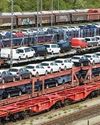
Fuel Price Hike, Supply Chain Disruption Hurt Festive Sales
Supply chain disruptions and fuel price hikes have hurt festive sales in a big way as most auto majors posted decline in sales in October.

Seaborne coking coal offers remain range-bound
Seaborne coking coal offers moved in a narrow range in October amid global supply tightness and healthy spot demand.
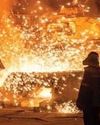
Global crude steel output down 8% in September
China manufactured 74 mt in September, fall of 21% y-o-y while India’s production went up by 7% to 10 mt.
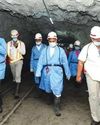
MOIL embarks on expansion projects
“Even though our country is blessed with manganese ore reserves, we import 50% of the domestic requirement. We have to lower our import dependence and save precious foreign exchange.” Ram Chandra Prasad Singh, Steel Minister

Iron ore handled by major ports down 17% in H1
The 12 major Indian ports handled 27 mt of iron-ore during H1 of 2021, down by 17% from 33 mt recorded for the corresponding period of previous year.
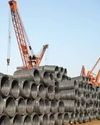
Shrinking China output to boost India exports
“In the third quarter of 2021, the company actively responded to the pressure from external policies, such as production curtailment and dual control system on energy consumption and intensity, as well as coal resource shortage and surging prices.” Baoshan Iron and Steel Co Ltd

Indian Railways' iron-ore handling up 25% in H1
Indian Railways in April-September of 2021 (H1) transported 84 mt of iron ore, up by 25% over 67 mt during April-September 2020.
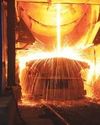
September crude steel production up 7.2% y-o-y
India’s crude steel production in September 2021 grew 7.2 percent to 9.547 million tons (mt) over September 2020 but was down by 3.2 percent from August 2021 output, provisional steel ministry data showed.

“Five enablers: way forward to sustainable cleaner steel”
Right and scalable technology, appropriate policy guidance by government, access to finance to fund transition, willingness of customers to pay for cleaner products and infrastructure for use of new technologies are the need of the hour for the sustainable and cleaner steel industry, according to Madhulika Sharma, Chief Corporate Sustainability, Tata Steel.